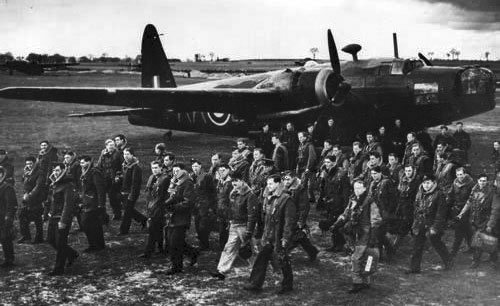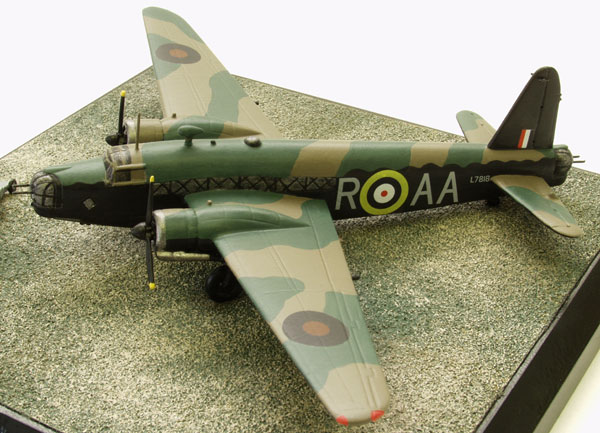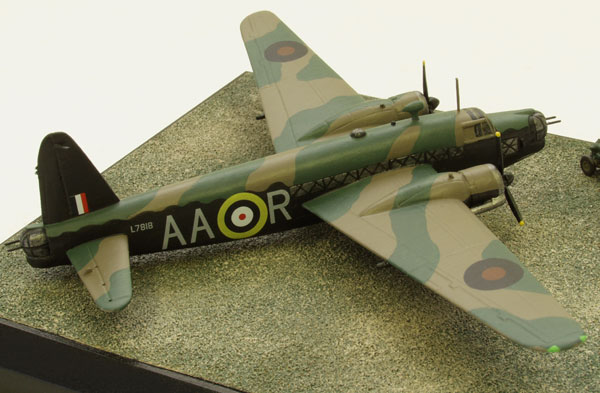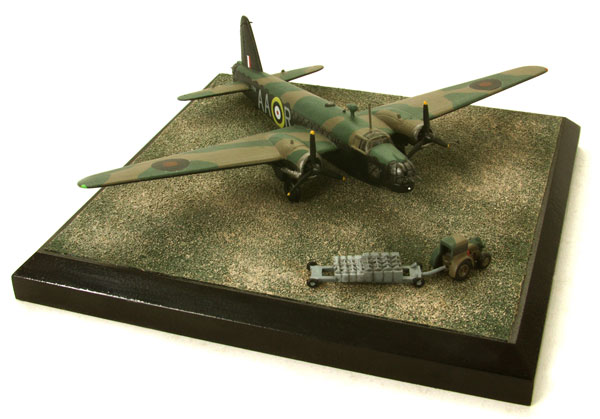Vickers Wellington Mk IC
Vickers Wellington Mk IC L7818 AA-R
75 Squadron, Sgt ‘Jimmy’ Ward Victoria Cross, RAF Feltwell, 7th July 1941.
Famously designed by Barnes Wallis the Vickers Wellington Mk IC featured a geodetic construction and was almost entirely fabric covered unlike its Bomber Command contempories the Lancaster, Halifax, and Stirling. The prototype first flew from Vickers Brooklands aerodrome on June the 15th 1936 piloted by Mutt Summers (test pilot of the Spitfire) who was accompanied by Barnes Wallis.
On October the 10th 1938 Wellingtons entered squadron service. Less than a year later they would be used in the first large scale operational sorties of World War II.
On the night of the 7th / 8th of July 1941 Wellington L7818 of No 75 (NZ) Squadron took part in a raid on the town of Münster. While returning from the raid the aircraft was attacked by a Messerschmitt Bf 110 over the Zuider Zee, the rear-gunner was wounded, the aircraft suffered heavy damage, and the starboard wing set ablaze. The crew were preparing to abandon the aircraft but sergeant James ‘Jimmy’ Ward who was a second pilot in the Wellington volunteered to go out on the wing and try to smother the flames with a cockpit cover which had served in the plane as a cushion. Attached to a rope and with the help of the navigator, he climbed through the narrow astro-hatch – far from easy in flying gear, even on the ground – put on his parachute, kicked holes in the Wellington’s covering of fabric to get foot and hand-holds on the geodetic lattices, and descended three foot to the wing with the aircraft flying at several thousand feet, and at over one hundred miles per hour. He then worked his way along to behind the engine, and, despite the fierce slipstream from the propeller, managed while lying down to smother the fire. Isolated from the leaking petrol pipe, this later burnt itself out. Ward was exhausted and suffering from extreme cold returned to the astro-hatch with great difficulty: “the hardest of the lot,” he wrote, “was getting my right leg in. In the end the navigator reached out and pulled it in.” Despite all the damage, the aircraft got home to a make an emergency landing at Newmarket.
This deed performed by Ward, a young schoolmaster before the war, earned him the Victoria Cross, sadly, Sergeant Ward was killed on a Hamburg raid only ten weeks later – before he received his Victoria Cross.

Scale 1:144 Wingspan 7.18″ (182 mm)
Base size 6.37″ (162 mm) square (No. 4)
Weight not including base 7.5 ozs (213 grams) Limited edition of 100 only




